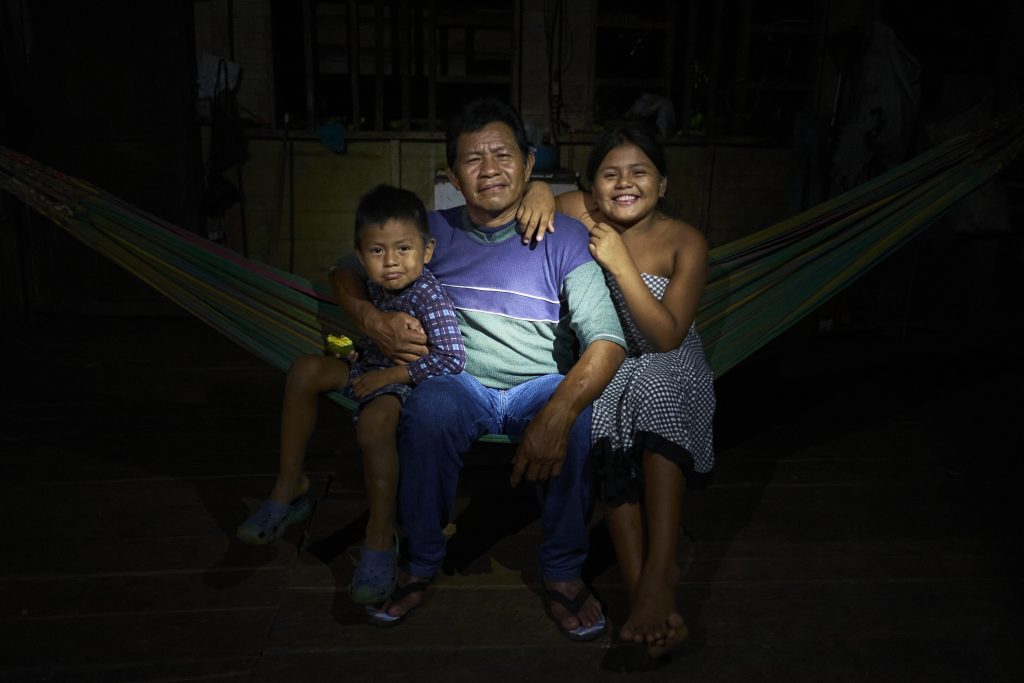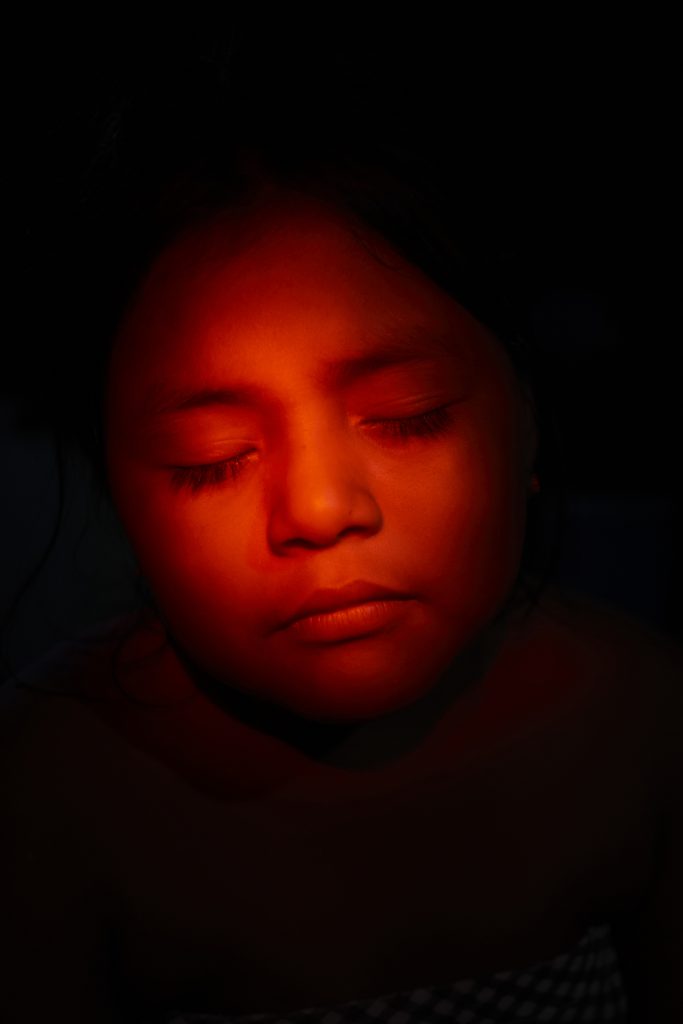
Text: Sara Zuluaga
Images: Ruido
Translated by Lola Malavasi
From 1950 to 1990, the Colombian Amazon contributed to the exotic fur market boom. Hunters in the region would kill between thirty and forty animals a day, species like the jaguar, the black cayman, tapirs, or pirarucus. Very early on in life, Edilberto and Milton learned how to hunt: to walk silently, set up trappers, and shoot their guns. But that abundance ended with the resulting unbalance in the fauna and flora of their territory. Alongside other things, this led them both to begin a transition from voracious, to sustainable hunters and guardians of the forest, hunting only what was necessary, working with the community in the recovery and care of the animals, and farming of the land. Airumaküchi, the association of hunters led by Edilberto and Milton, works towards food sovereignty for indigenous communities through strengthening their traditions, and the safekeeping of the forest and the species that inhabit it.1
This is not a story of abundance; it is a story of a struggle with bygone hunters, a battle with themselves and others. It is, instead, a story about the tension between protecting the land and disturbing a trade they have been learning their whole lives.
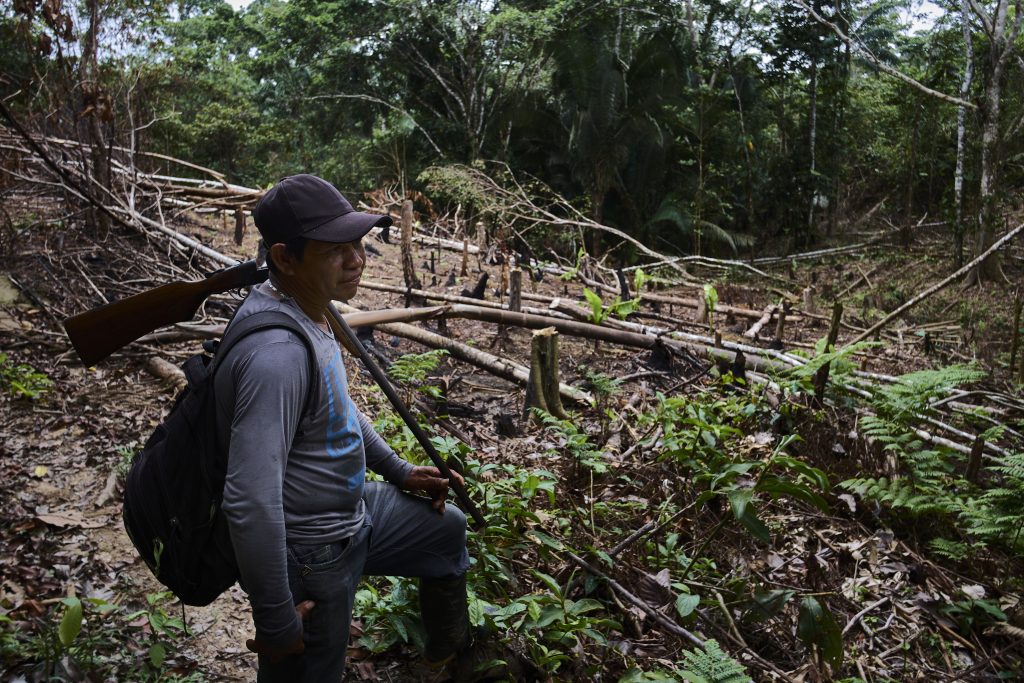
According to National Geographic, around the world, animal trafficking brings in between 8,000 and 20,000 million euros a year. This makes it one of the most lucrative illicit activities, next to drug and human trafficking. Colombia, only surpassed by Brazil in biodiversity, is particularly attractive for this activity.
Aquae Foundation affirms the Amazon jungle is home to 427 species of mammals, 1300 species of birds, and more than 400 amphibians. The Amazon makes up 40% of Colombia’s national territory. Vegetation in the so-called lungs of the Earth allows many forms of life to exist within this space.
But this land, like most others, is more than just fauna and vegetation; it is also inhabited by thirteen indigenous groups, according to the Gaia Amazonas Foundation.2 This tension between nature and human survival has made hunting an option for those who inhabit this jungle.
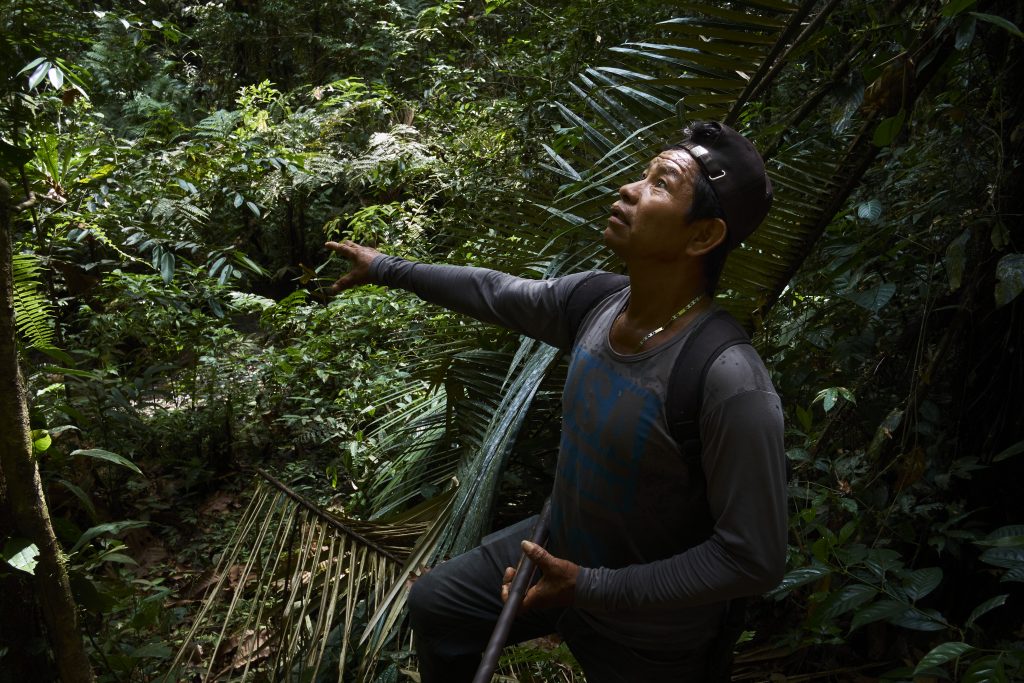
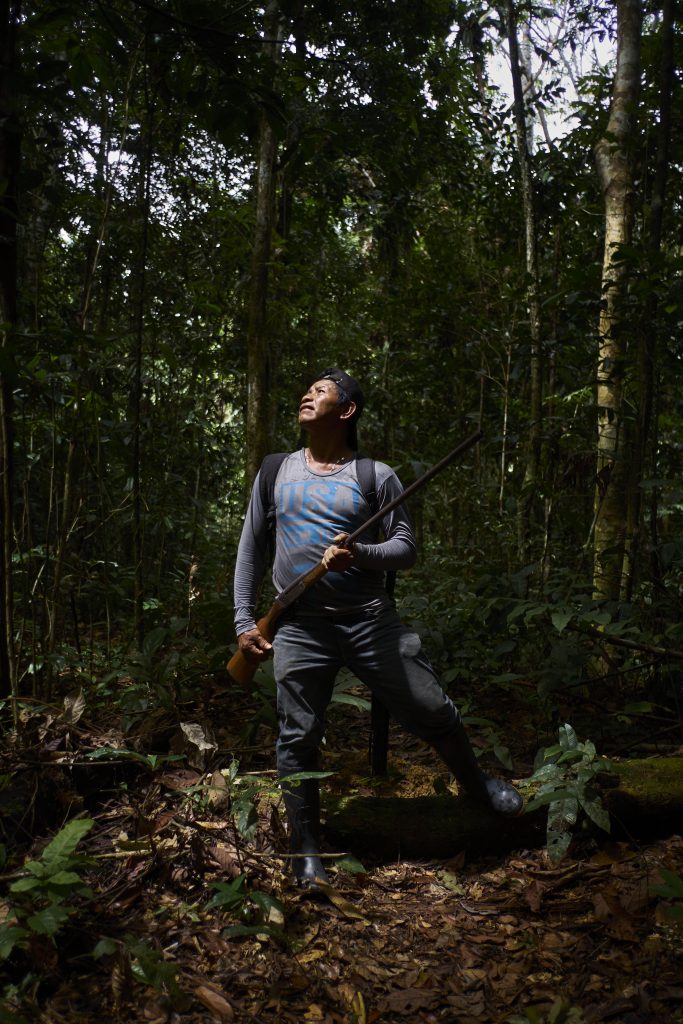
Here, hunting is part of the day-to-day. They learn to do it early on in life: to kill. To kill an animal. With some reserve, I imagine doing this must feel like Mike Wilson’s description of felling an enormous tree when he lived in a community of lumberjacks: something that has to be done, and is done.
Yesterday I felled my first tree. It was a pine tree. I took my time. My hands bled. My back won’t stop cramping. Strangely, I did not feel anything when it plummeted. Just before it fell, the trunk creaked. Inside it, the wood began to break. It sounded like the simultaneous discharge of a hundred rifles. And then the fall and the impact.
The clash of the pine tree with the forest floor was severe, so much so that I felt it more than I heard it. It was as if it was sucking in the air as it fell, only to return it with a violent burst and a hammer blow to the chest as it crashed against the ground. I was not expecting it. I almost fell over.
And afterward, silence. Absolute silence. I was alone in the world in front of a defeated pine tree. I stood there a while, to one side of the stump, as if waiting for something to happen. Nothing did. I did not feel anything.
I took the ax and returned to camp.3
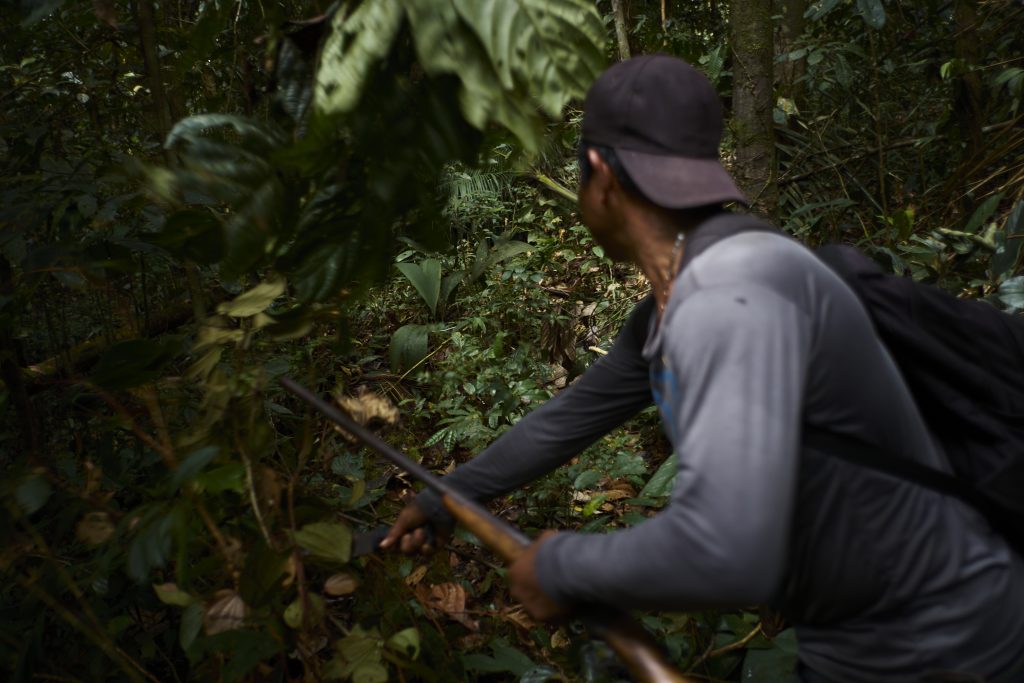
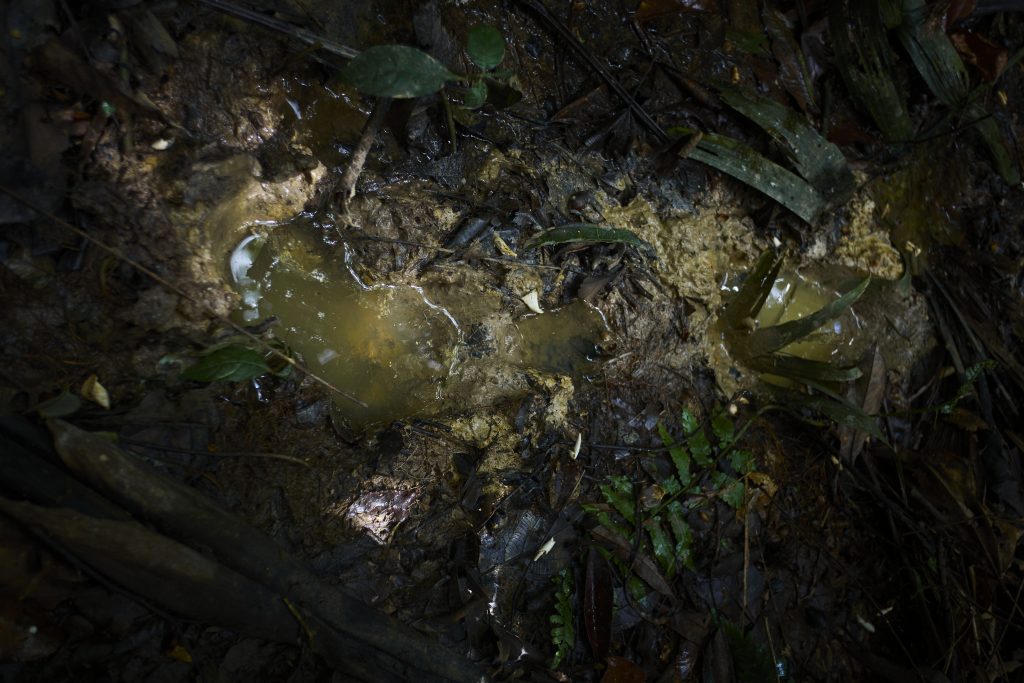
Edilberto Laurino is a 50-year-old indigenous Ticuna. Within his community, he is recognized as one of the best hunters. He learned to hunt when he was seven years old. His father taught him how to do it, then he taught him how to shoot his first shotgun, and how to arm the trappers, all of this in the jungle. The first thing he killed was a wood pigeon. “I have killed all sorts of things. I would hunt for the sport. I’ve killed caymans, jaguars, tapirs. What haven’t I killed?”
They want the link between the environment and their nutritional health to be nurtured by their ancient traditions
Edilberto’s father spent seven years dedicated to selling fur back when he used to hunt. When he would leave the jungle, Edilberto remembers seeing a raft full of jaguar fur coats, black caymans, pirarucu, and other species. “Can you imagine how many animals died during that time?”
Milton Pinto is also Ticuna. He is 27 years old, and five years ago he began learning about responsible hunting and protecting the animals around his territory. He learned to hunt in the jungle during his adolescence. However, by that time, it was not as lucrative as it had been: “For example, before you could hunt a 12kg lowland paca. Today they pay 12,000 per kg. Sometimes it woulg go well. Sometimes it would not, so it was a waste of time. So, working in the chagra, you would work and in fifteen days you would get paid, be it 150 thousand pesos.”
Both of them are part of the Airumaküchi Foundation. Edilberto is the founder and president, and Milton is the secretary. Airumaküchi means water tiger. The foundation is made up of men and women indigenous Ticuna, Cocama, and Yagua hunters. They collectively work towards sustainable hunting, food sovereignty, and protecting the forest.
The foundation was legally established in November 2015. From that point on, the process for a sustainable hunt is required to follow several steps: make an inventory of the tools needed to go hunting, learn about and divulge the reproductive cycles of the different species, and collectively organize a map of what happens. For this, they have a board with different species on which they place colored stones to monitor what they are hunting: purple for females, blue for males, and green for the offspring, which they sometimes hunt by error because one of the rules is not to do this. They also have a limit for animals that belong to a herd. They work on cultivating plants and nutritious fruits for animals to maintain their cycle and contribute to controlling deforestation.
A more conscious consumption of the animals that inhabit their territory has been made possible because of the leadership that recovered the Ticuna cosmovision, and the collective work amongst members of the association. This has helped the community to re-signify their old hunting practices. They can monitor how often species come around thanks to several trap cameras. They later use those images to compose educational tools to teach children and elders to be more aware.
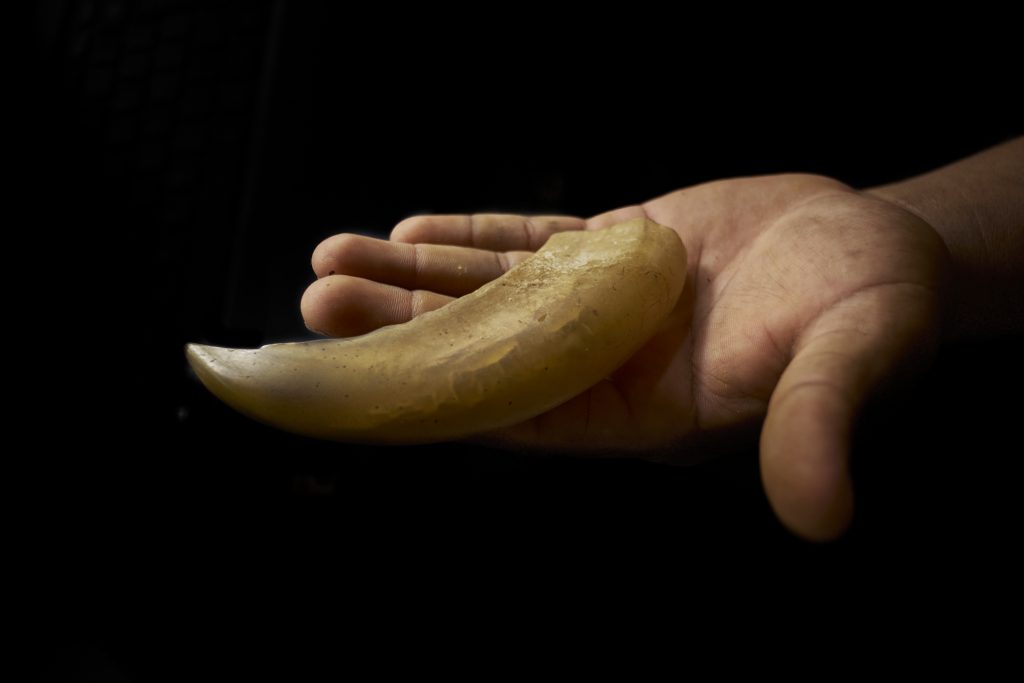
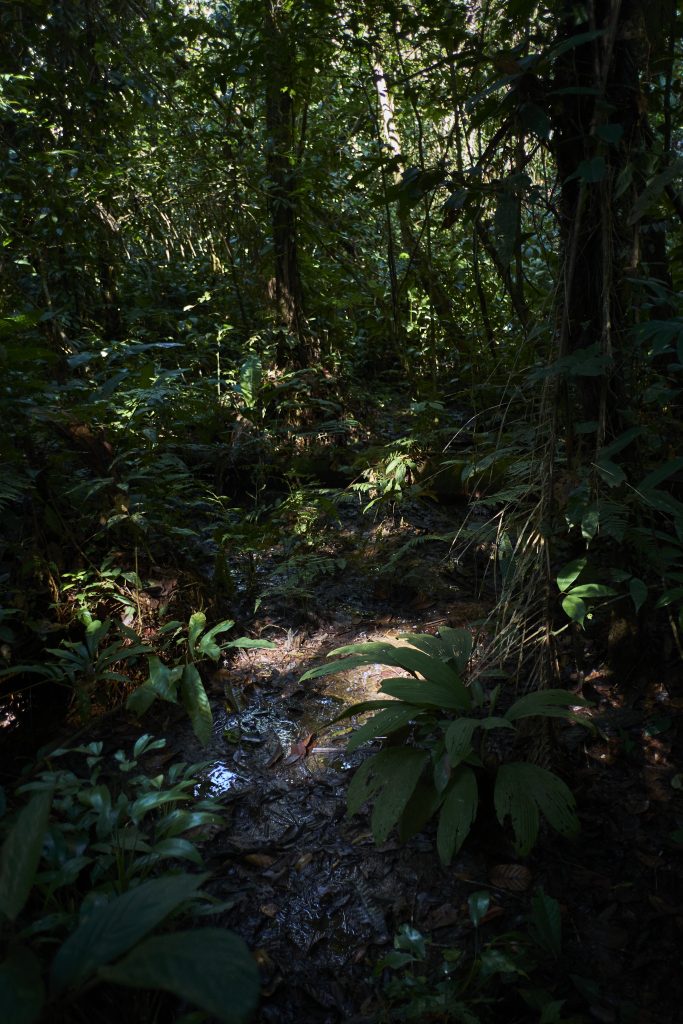
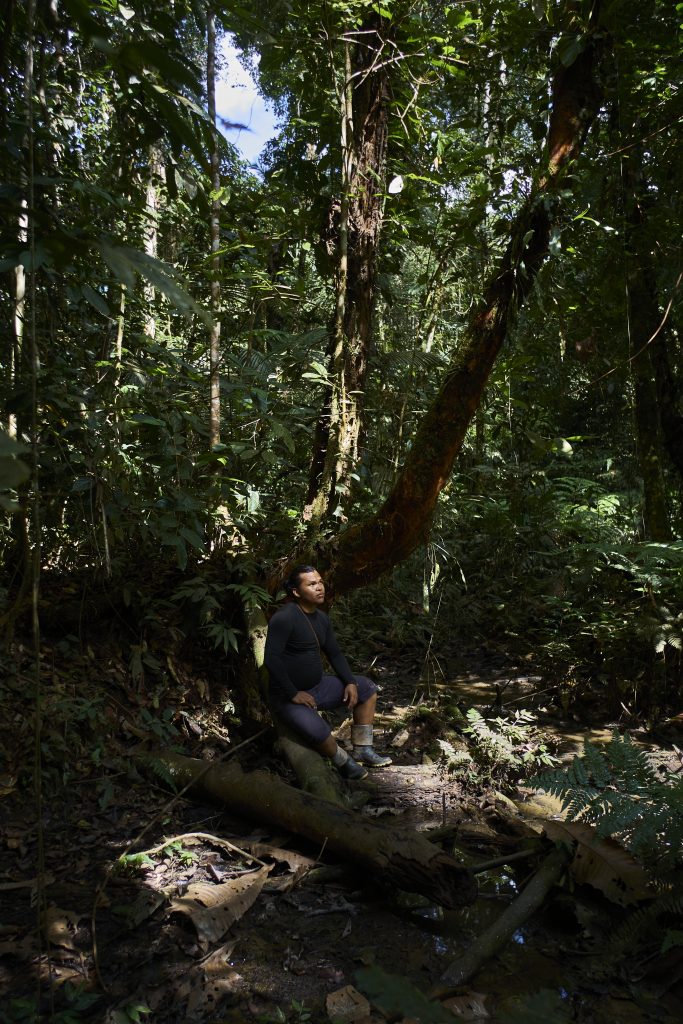

Edilberto carries his old rifle as he walks through the jungle to protect himself from any sudden attack from a wild animal. Although years ago this used to be the weapon he used to hunt, he has now transformed his old practices. He has been a hunter since he was seven years old, you can tell by the way he walks, how he looks around, how he listens. Here, hunters coexist with and promote the cycle of life and feeding of animals that live within this area. They will not stop hunting, but they long for that bond between the environment and their nutritional health to be nurtured by their ancestral traditions. More and more, through collective work and the resurfacing of sacred traditions, a new trade emerges that will perhaps look more like the jungle’s safekeeping.
